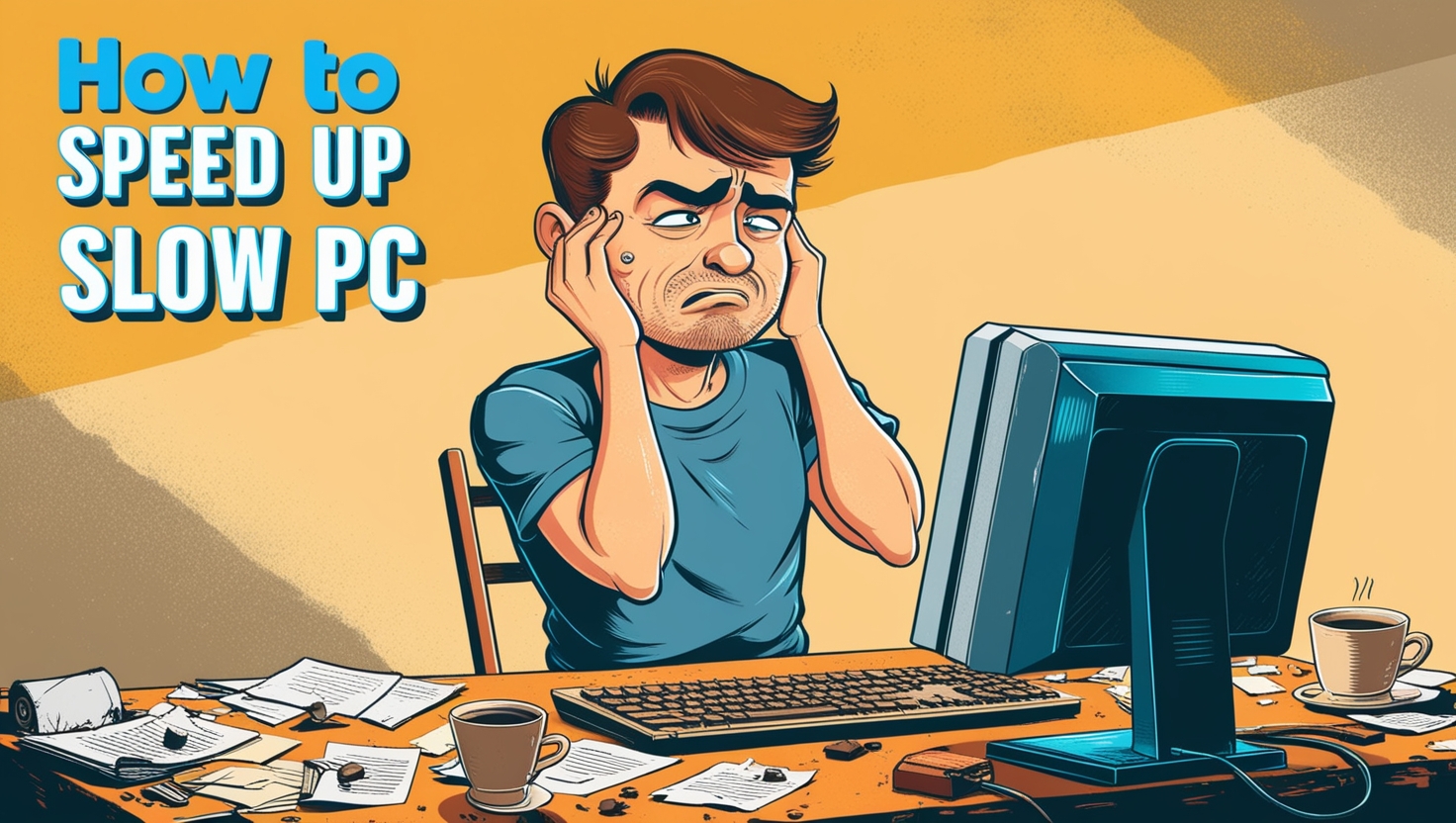Is your PC dragging its feet and taking ages to complete simple tasks? A slow computer can be incredibly frustrating, but the good news is that you don't have to suffer through sluggish performance forever. Whether you're using a desktop or laptop, there are several ways to breathe new life into your system without spending a dime. This post will walk you through five simple, effective steps to speed up your slow PC and boost its performance.
1. Declutter Your Hard Drive
One of the leading causes of a slow PC is a cluttered hard drive. Over time, we accumulate a lot of unnecessary files, such as temporary internet files, downloads, and old programs, which take up valuable space.
Steps to declutter your hard drive:
- Delete unnecessary files: Go through your folders (especially Downloads, Documents, and Desktop) and remove files you no longer need.
- Uninstall unused programs: Open Control Panel > Programs > Uninstall a Program, and remove any software you haven’t used in a while.
- Empty the recycle bin: Once you delete files, they aren’t completely removed from your hard drive until you empty your Recycle Bin.
- Disk Cleanup: Run the built-in Disk Cleanup tool to remove temporary files. Search "Disk Cleanup" in the Windows search bar, select your drive, and let the tool scan for unnecessary files.
This quick clean-up can instantly free up space, improving your PC’s speed.
2. Disable Startup Programs
Many applications set themselves to launch automatically when your computer boots up, which can significantly slow down the startup process. Disabling non-essential startup programs is a quick way to speed up boot time and enhance overall system performance.
How to disable startup programs:
- Windows 10 and 11: Press Ctrl + Shift + Esc to open Task Manager. Go to the Startup tab, review the list of programs, and disable any you don’t need right away by right-clicking and selecting Disable.
- Windows 7: Press Windows + R, type msconfig, and hit Enter. Navigate to the Startup tab and uncheck any unnecessary programs.
By reducing the number of programs that load at startup, your PC will boot faster, and you’ll save memory for more important tasks.
3. Update Your Software and Drivers
Outdated software and drivers can slow down your system, causing compatibility issues or leaving your PC vulnerable to malware. Regularly updating your operating system, drivers, and installed applications is key to keeping your computer running smoothly.
To update your system:
- Windows Updates: Open Settings > Update & Security > Windows Update, then check for updates. Install any available updates to keep your OS optimized.
- Driver Updates: Right-click the Start menu, select Device Manager, then right-click on each device (such as Display Adapters or Network Adapters) and select Update Driver.
Updating your PC ensures optimal performance, security, and compatibility with new applications.
4. Upgrade Your RAM (Random Access Memory)
If your computer struggles to run multiple applications simultaneously, you may be dealing with insufficient RAM. Upgrading your RAM can significantly boost your PC’s multitasking capabilities and overall speed.
Signs you need more RAM:
- Your computer freezes or lags when switching between applications.
- Applications take forever to load.
- You frequently encounter "low memory" warnings.
Most modern PCs allow for relatively easy RAM upgrades. You can check your system’s RAM usage in Task Manager under the Performance tab to see if upgrading is necessary. If you have 4GB or less, upgrading to 8GB or more could lead to noticeable performance improvements, especially if you work with memory-intensive applications like video editing software or gaming.
5. Run a Full Malware Scan
Malware, viruses, and other malicious software can severely affect your PC’s performance. If your computer has become noticeably slower over time, it's essential to run a full system scan to ensure there are no hidden threats.
Steps to run a malware scan:
- Use Windows Defender: Windows 10 and 11 come with built-in antivirus software called Windows Defender. Go to Settings > Update & Security > Windows Security and click on Virus & Threat Protection. Run a Quick Scan or select Full Scan for a deeper check.
- Third-Party Antivirus: If you prefer using third-party antivirus software, make sure it's up-to-date, and run a full scan to detect and remove any harmful threats.
Regular scans help prevent malware from slowing down your system and protect your data.
Conclusion: Keep Your PC Running Like New
These five simple steps—decluttering your hard drive, disabling startup programs, updating software and drivers, upgrading your RAM, and running a full malware scan—are surefire ways to speed up your slow PC and boost performance. Incorporating these actions into your regular maintenance routine will not only make your PC run faster but also extend its lifespan, saving you the hassle and cost of buying a new one.
Whether you're gaming, working, or just browsing, having a fast and efficient PC can make all the difference. So, start implementing these tips today, and enjoy a faster, smoother computing experience!



Comments ()